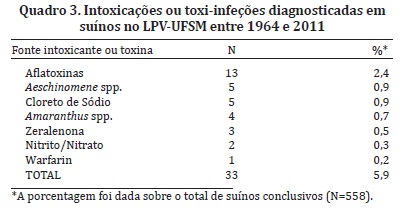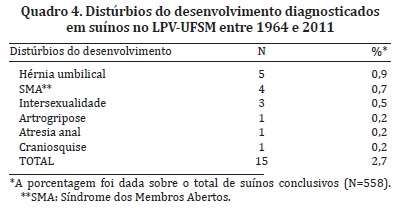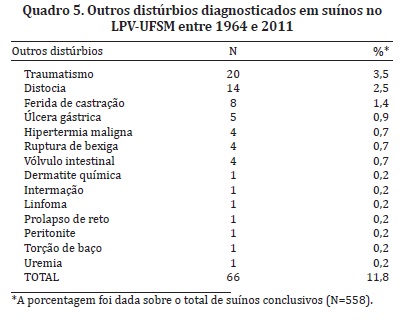A retrospective study of all necropsy performed in pigs in the Laboratório de Patologia Veterinária (LPV) at Universidade Federal de Santa Maria (UFSM) was carried out in order to determine the characteristics and frequency of diseases in the swine population raised in the region the region covered by the activities of LPV. Five hundred and four cases with conclusive diagnosis were found. The type of pig-raising in the area is mainly a familiar enterprise and the diseases found in this survey reflect this reality Infectious and parasitic diseases were the most prevalent [380(68.1%)], followed, in descending order of frequency, by nutritional and metabolic diseases [64(11.5%)], poisonings and toxi-infections and development disorders [15(2.7%)]. Other disorders due to varying etiologies, especially trauma, were cause of death in just over 11% of the cases. Bacterial diseases were responsible for more than half of the causes of death in pigs of the studied population, pointing to the influence of management, environmental and nutritional regional husbandry. The moist frequent disease diagnosed in pigs in the region in the region covered by the study was edema disease which along with other forms of infection by Escherichia coli was responsible for 23% of deaths. Viral diseases and neoplasm were not major causes of death in pigs in the region studied. Nutritional hepatosis and aflatoxicosis are important diseases in pigs in this region and and there causation are mainly linked to nutritional management.
Swine diseases; veterinary pathology; epidemiology; causes of death; retrospective study





